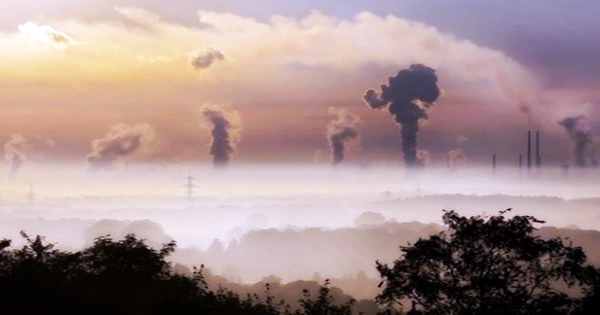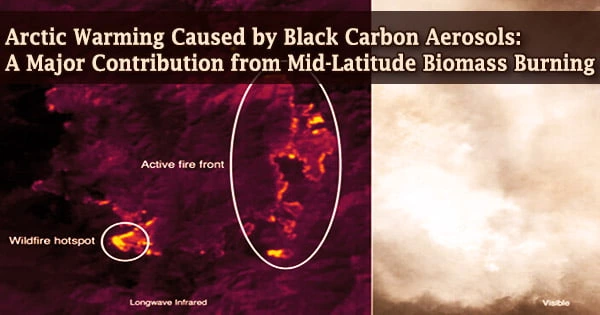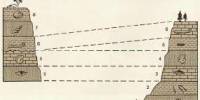The yearly average temperature in the Arctic has risen about twice as rapidly as it has everywhere in the world during the last few decades. Although global increases in carbon dioxide concentrations are the primary cause of this warming, different climatic forcers and feedback processes intensify Arctic warming.
In the Arctic, black carbon (BC) aerosols, sometimes known as soot, have attracted attention as a climate forcer that has accelerated this warming. BC is released into the atmosphere by the combustion of fossil fuels and biomass effectively absorbs solar energy and heats the environment.
Incomplete combustion processes, both human (e.g., diesel engines) and natural (e.g., forest fires), emit BC (e.g., wildfire). BC may heat the atmosphere and darken surfaces, particularly snow and ice, due to its capacity to absorb visible and infrared radiation. The majority of Arctic BC is thought to have been transported from outside the Arctic.
However, there are still significant uncertainty in estimates of the relative contribution of various sources to Arctic BC, and therefore BC’s climate impact.
Research content
During the Polar Airborne Measurements and Arctic Regional Climate Model Simulation Project (PAMARCMiP), coordinated by the Alfred Wegener Institute (AWI) in Germany, the study team collected vertical profiles of BC mass concentrations up to 5 km high in the Arctic in March-April 2018.
The observations were conducted using the AWI Polar 5 research aircraft with Station Nord as the operational base (81.6°N, 16.7°W). BC mass concentrations were compared to those obtained in previous spring Arctic aircraft investigations (ARCTAS in 2008, HIPPO in 2010, and NETCARE in 2015) in order to uncover variables causing year-to-year variance in BC abundance.

Black carbon mass concentrations in 2018 were similar to those in 2010, ranging between 7 and 23 nanograms per cubic meter (ng m-3). In 2008 and 2015, however, greater levels were consistently reported at all altitudes up to 5 km.
Despite the fact that each airplane measurement was taken over a small area and for a short period of time, the data show that BC mass concentrations in the Arctic spring vary significantly from year to year.
Results
The researchers discovered that relative changes in “vertically integrated BC mass concentrations,” or the amount of BC in columns between 0 and 5 km altitudes, were generally consistent with biomass burning activity estimates based on MODIS satellite-derived fire counts detected at latitudes north of 50oN.
The observed increase in BC levels during the Arctic spring was most likely caused by air transport driven by biomass burning in regions between 45-60°N and longitudes 30-50°E and 100-130°E (western and eastern Eurasia, respectively).
During PAMARCMiP in 2018, a pollution layer was periodically visible through the windows of the research aircraft, with the sources most likely being biomass burning in the mid-latitudes. During the monitoring periods in 2008 and 2015, it is likely that pollution from biomass burning was transported to the Arctic more frequently.
The team also looked into how well current numerical model simulations can replicate the known year-to-year variability in BC column quantities. The computer models can estimate the contributions of anthropogenic BC sources and biomass burning separately.
When biomass burning activity was low in 2010 and 2018, the numerical models indicated significantly smaller values than the observations, and when biomass burning activity was high in 2008 and 2015, they showed much larger values.
These findings imply that current numerical models accurately reproduce the contribution of anthropogenic BC while greatly underestimating the amount of BC from biomass burning (by a factor of three).
Significance of the results
In the Arctic, the effects of BC on the atmosphere (positive radiative forcing) are thought to be greatest in the spring, when BC mass concentration is highest and incoming solar radiation is maximum.
BC in the spring is especially significant because minor changes in the timing of snow/ice melt might affect the Arctic’s radiation budget. The findings of this work provide a solid foundation for improving and evaluating numerical model predictions of the BC radiative effect in the Arctic.
Furthermore, in the mid and high-latitudes, global warming has the potential to enhance biomass burning. This study implies that future changes in BC emissions may have a greater impact on the amount of Arctic BC and its radiative impacts than prior projections.
















